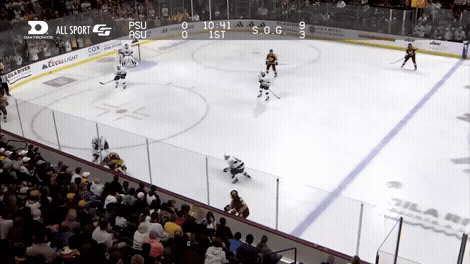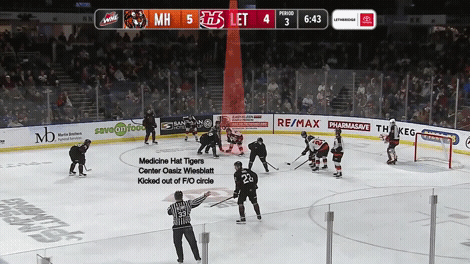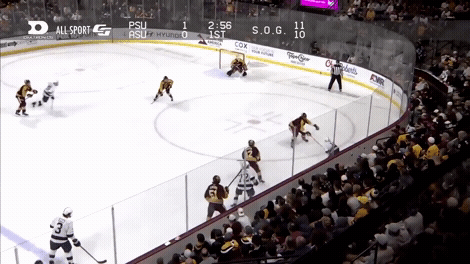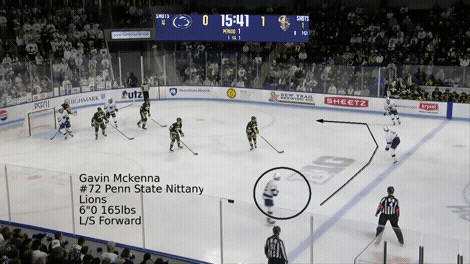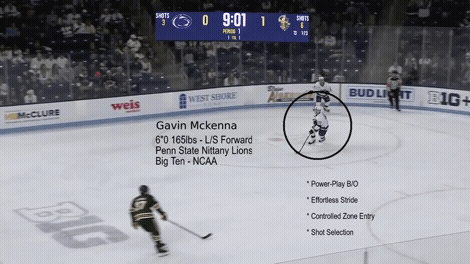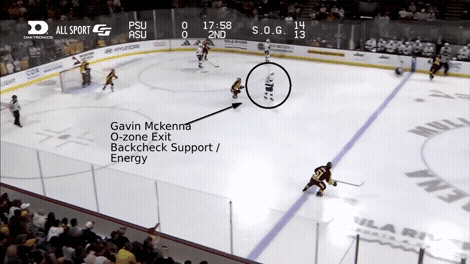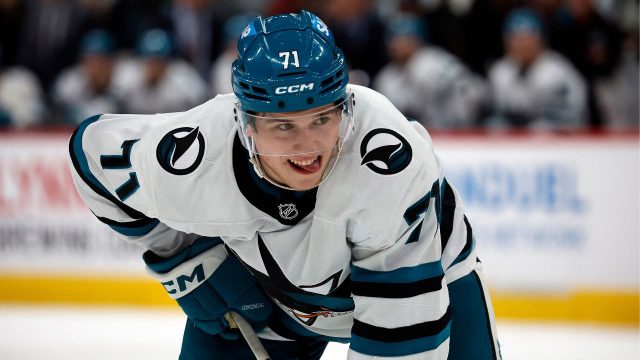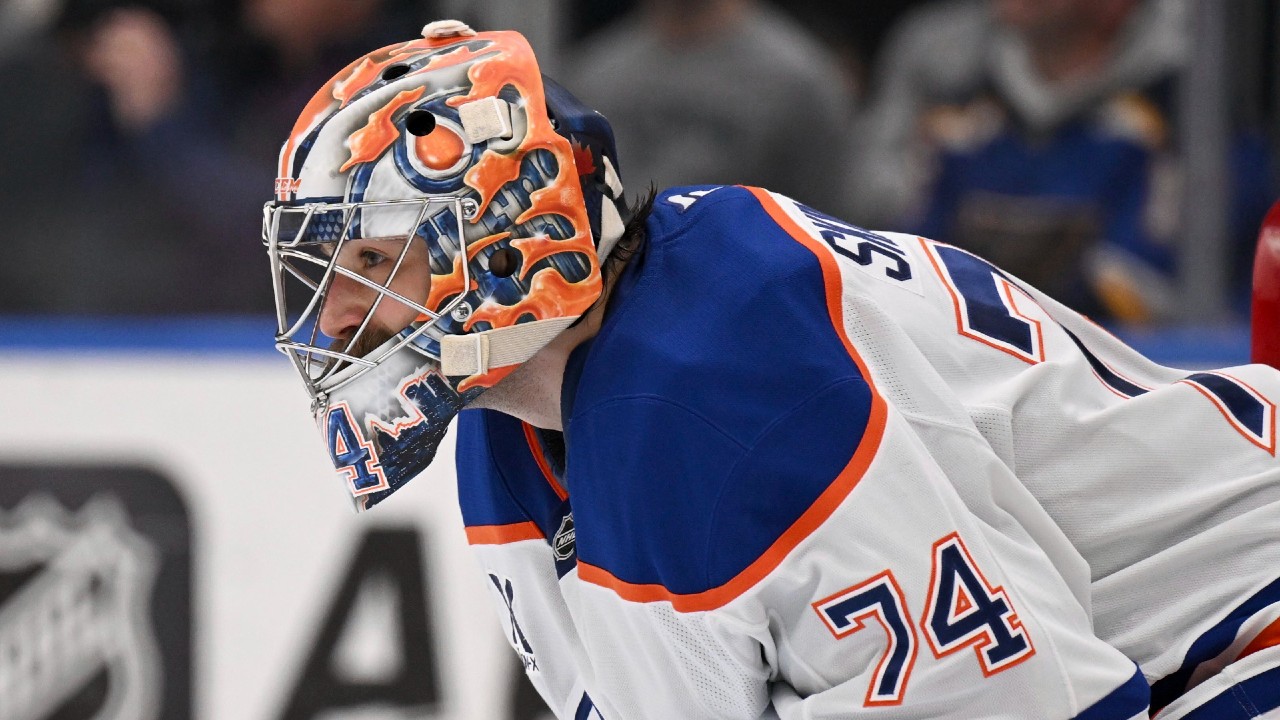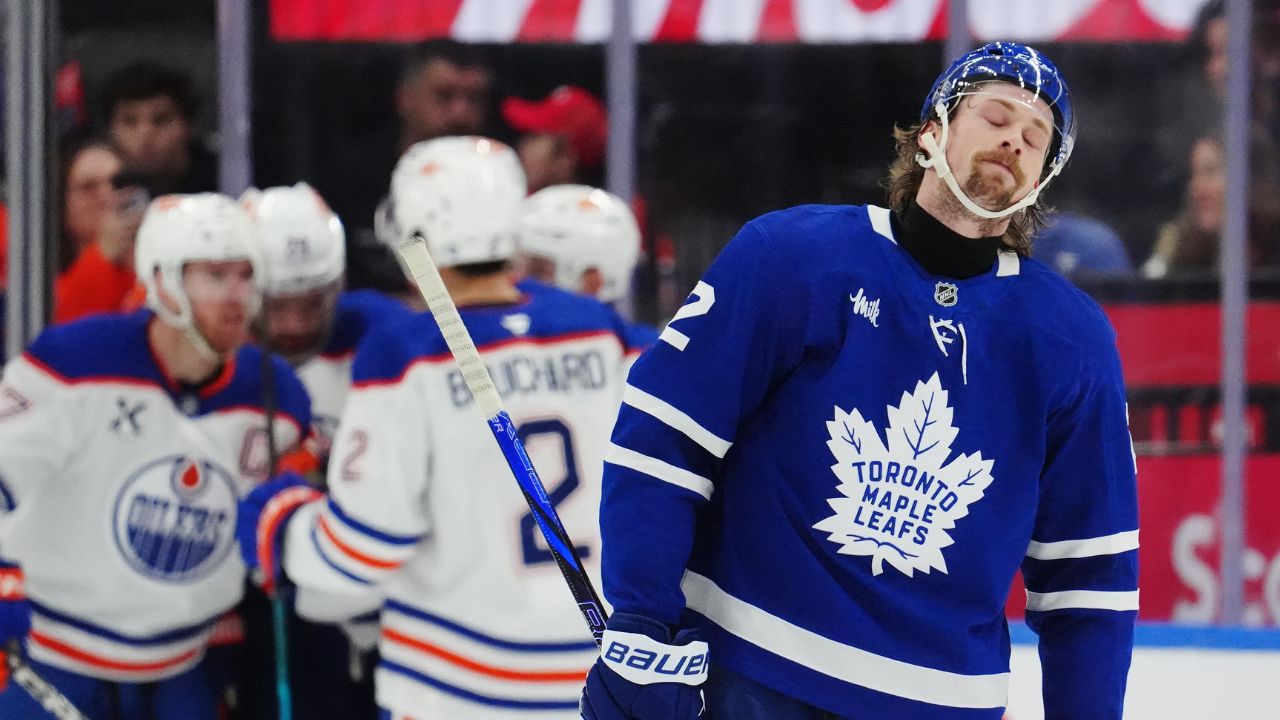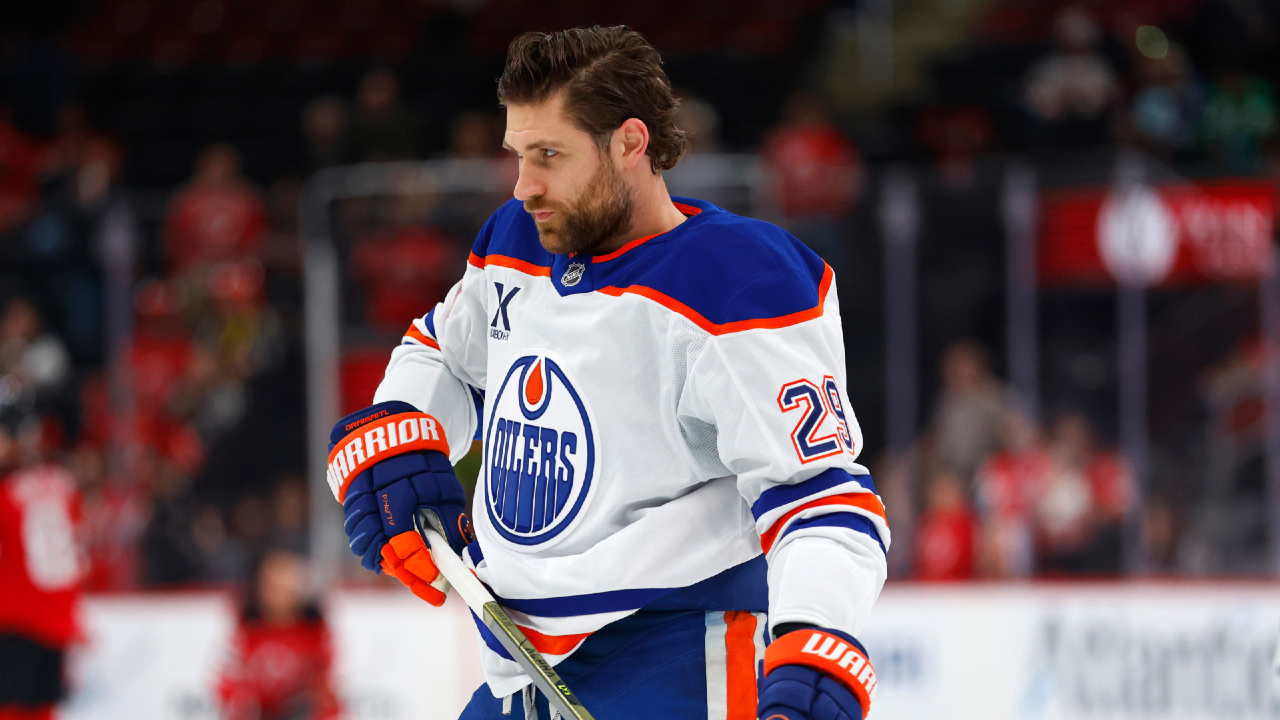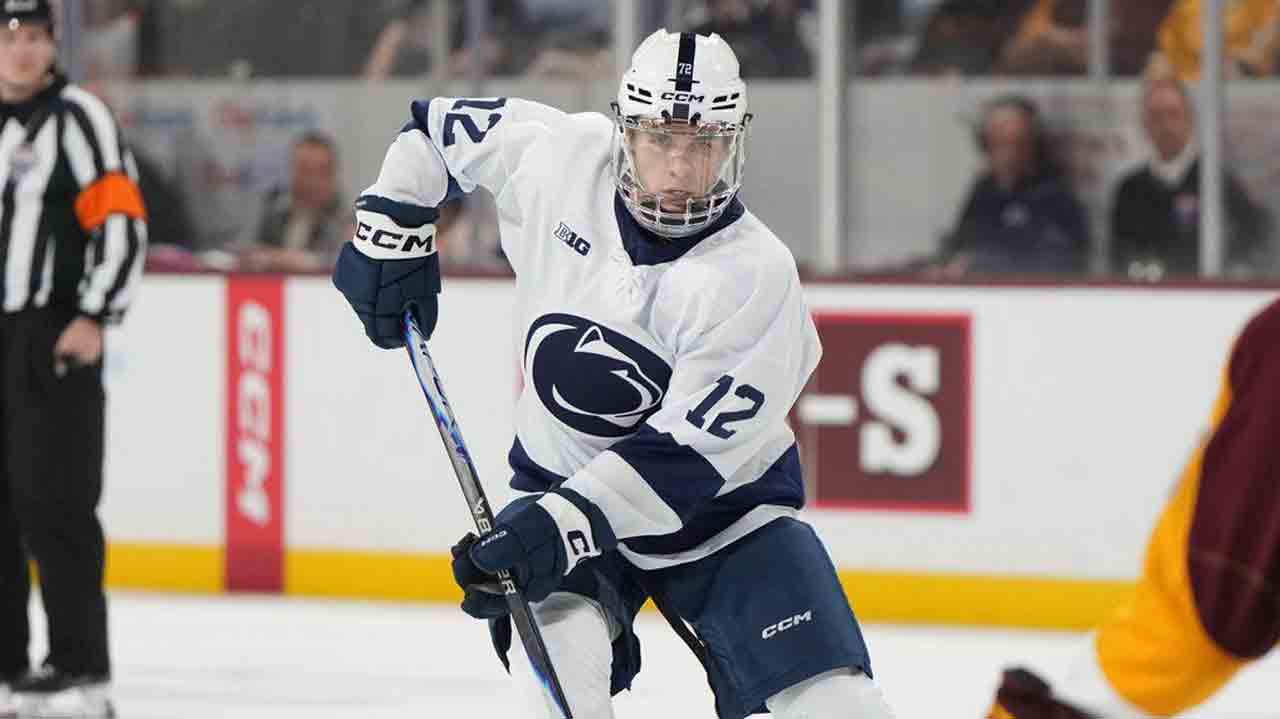
With the NCAA hockey season’s first two weeks now in the books players are settling into their roles and teams are making adjustments ahead of their week three opponents.
Penn State Nittany Lions students and fans had an opportunity to view top rated NHL prospect Gavin McKenna at home versus the Clarkson Golden Knights this past weekend at their much-anticipated home opener. They ended up splitting their series, losing game one by a score of 6-4 before rebounding for a 5-2 victory in the second game.
All eyes are on McKenna, the top rated NHL prospect for the 2026 draft, and he’s adjusting to how the college game is played. The NCAA game is flush with much older, stronger athletes who are better equipped to make life physically, and at times mentally, more difficult on star forwards like McKenna. It’s going to take some time for Penn State to gel as a team and, more specifically, McKenna to adjust to the 200-foot effort required to win at the college level.
Here are my observations from McKenna’s first four games suiting up for Penn State this season:
How McKenna is being deployed
Through the first four games of the season, Nittany Lions head coach Guy Gadowsky has deployed McKenna in a variety of roles. He’s touching the ice in all situations and is averaging over 22 minutes of ice time per game. Incredibly, McKenna has seen his ice time on the power play alone range from five minutes to over eight minutes in the second game of the Clarkson series. His role on the penalty kill has seen him deployed for just over a minute per game.
Winger or centre?
McKenna is best described as a “free-wheeling winger.” He’s a motion player who, despite zone exits that generally begin from the half wall, utilizes the entire width of the ice to make plays and is exceptionally dangerous when he explodes out of the defensive zone and attacks with speed through the neutral zone.
Here’s an example of McKenna pouncing on a puck in the neutral zone and out-skating opponents up ice to generate a high-danger scoring opportunity:
Last year I noticed how McKenna struggled at times taking face-offs and it was especially noticeable in the defensive zone. Suffice to say he doesn’t look comfortable in the role and it’s obviously something Gadowsky is aware of as well. McKenna has only been tasked with taking one face-off through four games for Penn State.
Since Mckenna has only taken one draw this year I dove into my archives from last season when he was playing for the Medicine Hat Tigers in the WHL. The sequence below speaks for itself in terms of face-off approach and identifying responsibilities if the draw is lost:
When NHL clubs are debating whether or not McKenna will be able to play centre in time they will no doubt monitor if he is being used in that role at Penn State, and see what his success rate looks like in the face-off dot along with his on- and off-the-puck detail defensively. At this point it’s pretty clear McKenna is a winger and not likely to be able play centre moving forward.
Attracting the defence’s attention
McKenna is blessed with elite offensive hockey sense, puck touch, and vision. He thinks the game one play ahead and executes accordingly with his playmaking. He’s the kind of prospect who attracts the opponent’s attention when he has the puck on his stick, but he has the ability to exploit holes in their coverage when more than one of those opponents attempts to front him to kill a play in their zone.
Here are some examples of what I’m talking about from his first few NCAA games:
In the first clip McKenna looks to be contained along the half wall in Arizona State’s zone, but his small area agility and puck management leads to a net front opportunity for his group:
The second clip comes from the game Friday night versus Clarkson. Notice how McKenna rotates at the top of the zone and, in the process, baits two Clarkson defenders into panicking on a decision. Instead of remaining in place with poise they end up getting tangled up while attempting to front McKenna, which leads to an easy back door feed and a power play goal for Penn State:
Scouting the details
I spoke with my former teammate and long-time colleague Chris Brooks after Clarkson’s win. Brooks is the associate head coach at Clarkson and is tasked with pre-scouting their opponents. He mentioned to me how Clarkson prepared their group for the “free-wheeling” approach the Nittany Lions present and how they urged their team to chip pucks deep into Penn State’s zone, outwork them in the trenches, and challenge them to check the full 200 feet of the ice surface.
When it came to McKenna specifically, Brooks emphasized to his team how McKenna “lurks” and “builds momentum off his impact on the power play, which in turn transitions confidence into his 5-on-5 game overall”.
He went on to state it’s imperative for defenders to keep a player like McKenna “outside the dots in the offensive zone, protect the middle of the ice, and not chase him around the perimeter when he has the puck on his stick because he’s far too slippery and dangerous when sliding off checks. He’s deceptive and has the ability to change direction on a dime, which makes him very difficult to contain. We tried to limit his quick strike offence in transition and in our zone by keeping him to the outside and be patient enough to allow him to have time and space from the perimeter because he won’t hurt us as much from the outside.”
Here’s a clip of what Brooks is describing from the second game in the series. This sequence leads to a poor shot selection from McKenna (No. 72) and a puck that exits the offensive zone when he misses the net on the far side.
My conversation with Brooks then switched back to the strategy of getting pucks deep behind Penn State defenders and winning the small area battles in the defensive zone.
“Penn State have an exceptional amount of skill and McKenna leads the way,” he said. “We wanted to challenge their group to win pucks along the boards and wear them down when possible. McKenna, for all of his skill, is still learning that he has to exit the offensive zone on time and activate off the puck in all three zones more consistently at the college level.”
I value Brooks’ feedback and, while scouting McKenna in these games, noticed how he has significant room to improve defensively.
Here an example…
In this clip, McKenna has surpassed his “fatigue threshold” and should have gone off on a line change. Instead, he’s late with his offensive zone exit and stops skating at the centre ice stripe on the back check:
Conclusion
Gavin McKenna is supremely talented. He’s a dynamic offensive machine who posted 41G-88A in 56 regular season games last year with Medicine Hat and followed it up with 9G-29A in 16 playoff games. He finished the season a plus-74 overall, which tells me he wasn’t cutting corners at the major junior level.
The NCAA game, however, is different than the WHL. McKenna won’t be facing as many 17- or 18-year-olds in the NCAA. College hockey is flush with men in their early-20s and not so much teens who are still growing into their bodies. McKenna has posted 1G-4A in his first four games, so his offensive element has been on full display, but he’s also a minus-4 so far.
As much as I’m excited about McKenna’s trajectory as a potential top flight scoring machine when he arrives in the NHL, I’m also monitoring his overall game to make sure I’m comfortable with his defensive effort. The NHL is the top league in the world and it’s difficult to produce offence there every night. McKenna will score, but he has room for growth in other areas of his game and, the good news is, he has time on his side to figure it out as he develops this year in the NCAA.


